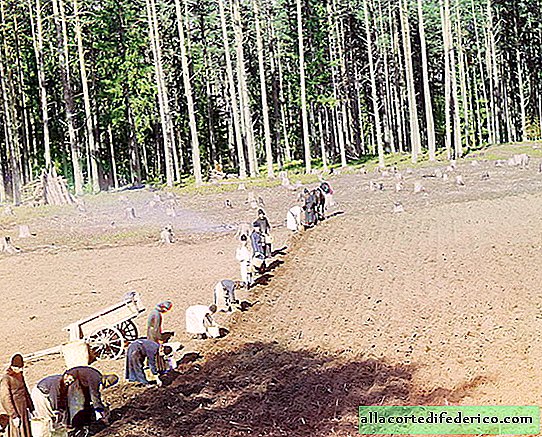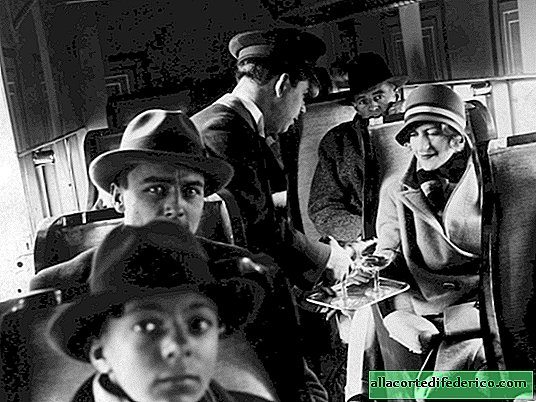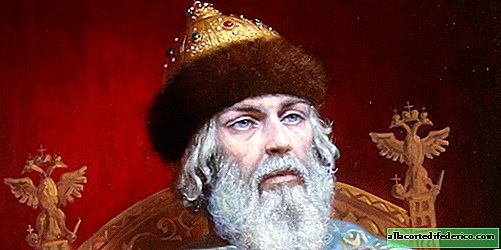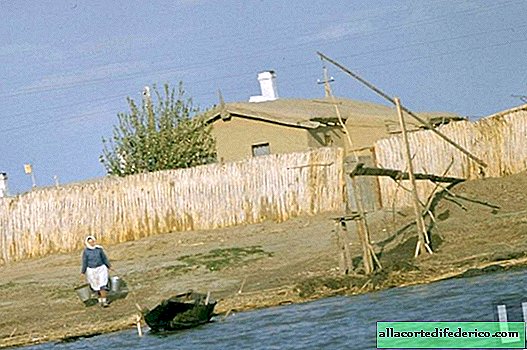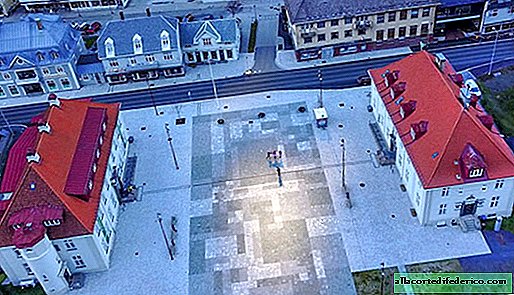18th century abandoned church
In 1929, a large-scale company began to fight against religious organizations in the USSR, which led to the mass closure, destruction and reprofiling of religious buildings that did not have, according to local executive committees, historical value. The Church of the Annunciation of the Blessed Virgin Mary in the Tver region was no exception. Soon after the adoption by the Commission on Religious Affairs of the simplified procedure for closing religious buildings, the Church of the Annunciation ceased its activity, repeating the fate of most churches of that time.

The beginning, as well as the end for this church, was rather commonplace. Having collected enough money from local parishioners, the wooden church standing on this site, as in computer games, “stuck” to the brick one by 1776. But this is far from the final renovation of the temple. Between 1781 and 1803, the neighboring wooden church of Sergei Radonezh, apparently, was dismantled and added as a new chapel to the Annunciation Church. Also in this period of time a bell tower appeared. In 1804, another refectory was arranged in the refectory - the prophet Elijah. Until the next, the last change in the architectural appearance of the church, more than 70 years will pass.
The chapel is an additional altar with all the attributes necessary for the liturgy (the main Christian worship), including the altar and the throne. A chapel is being set up so that an additional liturgy can be held in one day, because according to the canons of the Orthodox Church, only one worship on the throne can be performed per day (a quadrangular table in the middle of the altar). Accordingly, if the church has several limits with its thrones, then there can be several liturgies.

In 1881, a large-scale reconstruction began, which lasted about 10 years, and was designed by the architect Karl Ivanovich Gelbig, which left little to the original church.
 This white brick octagon is what remains of the original church of 1776. Photo taken from Denis Spirin's blog
This white brick octagon is what remains of the original church of 1776. Photo taken from Denis Spirin's blogA few words about the architect ¹. Having been educated in St. Petersburg, Karl Ivanovich was sent to serve in Tver. He was part of the Commission for the Transformation of Prisons in the Tver Province, carried out engineering and construction work in them. In addition to prisons, K.I. Gelbig was also engaged in church architecture; according to his projects, more than one temple was built in the Tver province. He rose to the rank of provincial architect of the construction department of the Tver Provincial Government in 1887.
The church grew in three directions, the bell tower and the refectory were completely rebuilt, and judging by the final result, changes were made to the plan for the restructuring of the church.
 The restructuring project of the Church of the Annunciation. 1880
The restructuring project of the Church of the Annunciation. 1880 
For example, the bell tower was moved a few meters to the west, which significantly increased the refectory. The exterior decoration was simplified, especially during the construction of a new bell tower in the 1890-91s.

Perhaps changes to the project were made by the diocesan engineer V.I. Kuzmin, who watched the progress of the reconstruction in the later stages.
But the most interesting was not outside, although the church has a rich construction history, but inside. The entire ceiling and walls were painted with bright adhesive painting, mostly based on engravings by the German romantic painter Julius Schnorr von Karolsfeld.
 To the left of the arch you can see a painting on the engraving of Karolsfeld - "Sermon on the Mount"
To the left of the arch you can see a painting on the engraving of Karolsfeld - "Sermon on the Mount"In the preserved original part of the church, one can still consider an earlier painting, presumably made in the mid-19th century. But it was partially updated after the reconstruction.
 Below you can see the image of the Last Judgment on the wall of the quad
Below you can see the image of the Last Judgment on the wall of the quadIn 1883, painting was done in the aisles of the temple, and in 1893 in the refectory and the altar - by the tradesman of the Krasnokholmsk painter Alexei Emelyanovich Suvorov.
 Painting by Alexei Emelyanovich Suvorov. Above is the Day of Pentecost, to the right is the New Jerusalem, and below is the Removal of the Seventh Seal.
Painting by Alexei Emelyanovich Suvorov. Above is the Day of Pentecost, to the right is the New Jerusalem, and below is the Removal of the Seventh Seal.  Engravings by Julius Schnorr von Carolsfeld. From left to right - "Day of Pentecost", "New Jerusalem", "Removing the Seventh Seal"
Engravings by Julius Schnorr von Carolsfeld. From left to right - "Day of Pentecost", "New Jerusalem", "Removing the Seventh Seal" 
At least one more painter, Alexander Alekseevich Barkhatov, who worked in this church in 1877, is also known, he was hired by parishioners Yakov Ivanovich Pershin and Ivan Nilovich Serov. Whether his work has been preserved or not, it is not clear, but it is obvious that the paintings that have survived to this day are not the work of one master.
 Mural united by the theme "Commandments of Bliss"
Mural united by the theme "Commandments of Bliss"At the same time, despite small differences in the technique of writing frescoes by different authors, they still look colorful and harmonize with each other.

Given that the temple has been abandoned for more than 80 years, such a preservation of the ceiling painting is quite surprising and makes this church not so banal.

¹ All the sources that I found on this church indicate other initials of the architect (K.K.), but they could not find any information about such a person, but there was a person with the initials of K.I., moreover, the architect who worked in the Tver region and precisely in these years, so I believe that it is the person with the name Karl Ivanovich who is the author of the project for the reconstruction of the church.

